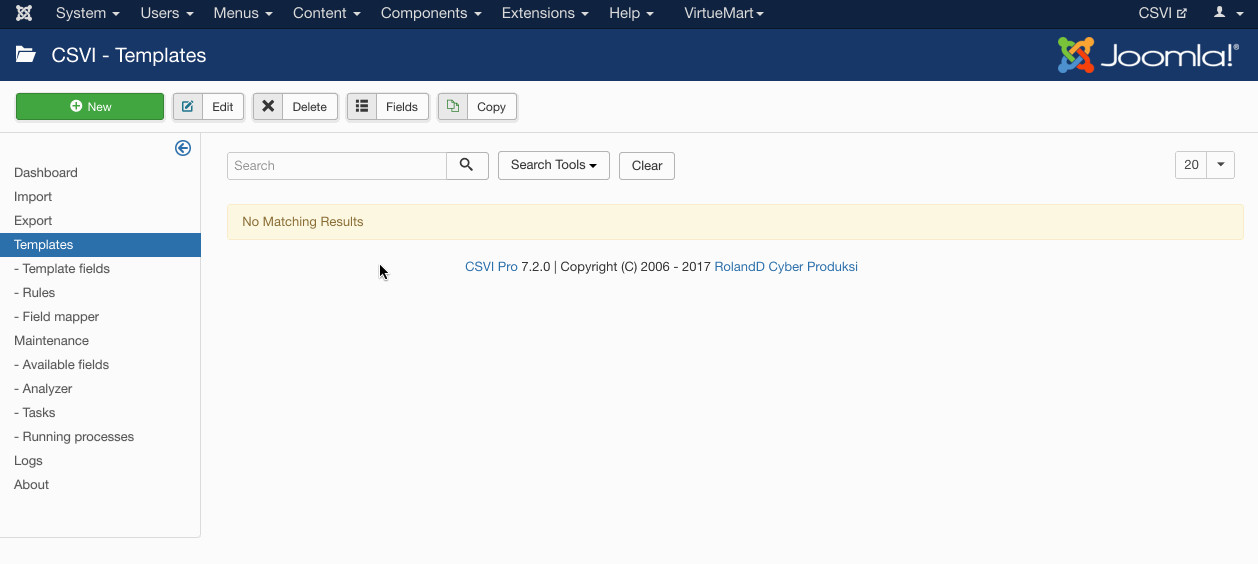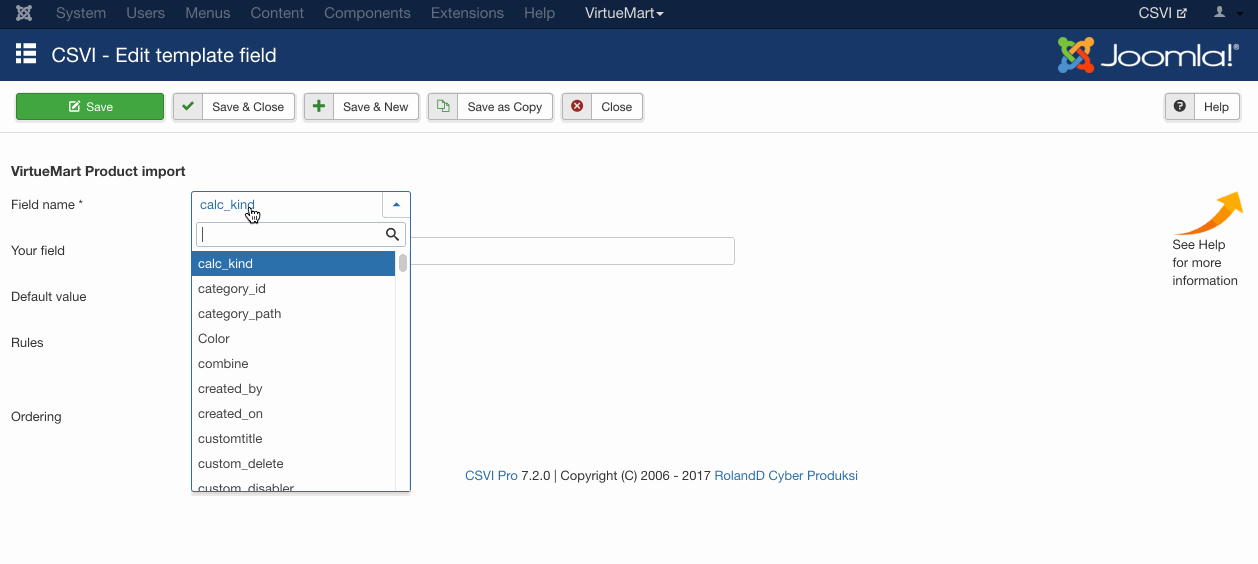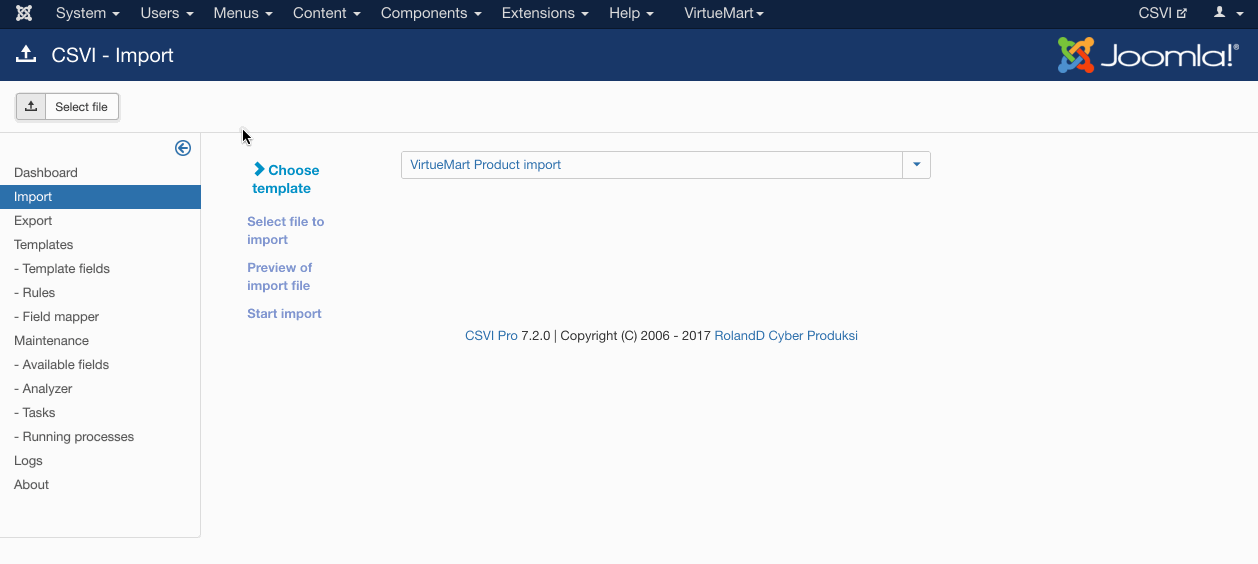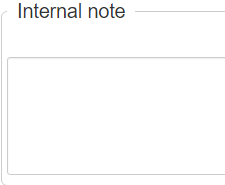VirtueMart
VirtueMart Product Description Fields
This page shows which fields you can use for import and export of the VirtueMart production description fields.
VirtueMart Categories and Product order import
A template can be created by following these steps:
- Go to Components -> CSVI Pro -> Templates
- Click New
- Give the template a name, say for example VirtueMart Product import
- Set Action to Import
- Set Component to VirtueMart
- Set Operation to Product
- Click Next: Select Source
- Source is set default to Load from your computer. No need for change.
- Click Next: Select options
- The default values are OK, change if needed.
- Click Next: Select fields
- Nothing needed here as we set to Use column headers as configuration in step 10.
- Click Next: Finalize
- All done here
- Click Close to return to the list of templates or Edit if you want to fine-tune the template further.

- Go to Components -> CSVI Pro -> Templates
- Click on Template fields
- In the Search Tools select your template
- Click on New to add a single field or click on Quick Add to add multiple fields.
Quick Add
The Quick Add Option allows you to quickly add multiple fields to a template. It is not possible to set any settings per field here but that can be done after the fields have been added to the template.

- Go to Components -> CSVI Pro -> Import
- Select the template created earlier with name VirtueMart product import
- Click Select file
- Select the file to import
- Click Preview
- You now see a preview of the file as to how CSVI sees the file
- Click Start import
- The import is run
- The Log details page will be shown with information regarding the import if the Enable logging is enabled in the template

VirtueMart Product Pricing Fields
This page shows which VirtueMart Product Pricing fields you can use for import and export.
VirtueMart Calculation Rules import
This VirtueMart Calculation Rules import tutorial explains how to import calculation rules into VirtueMart using RO CSVI.
